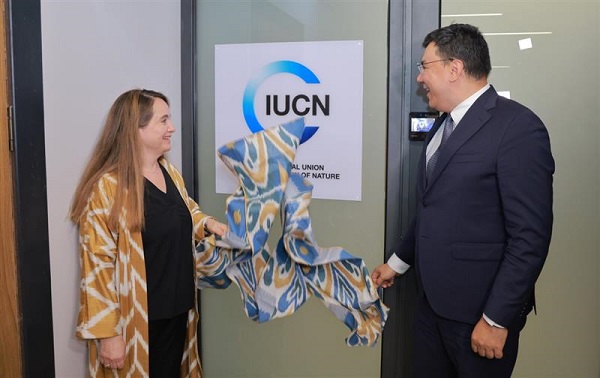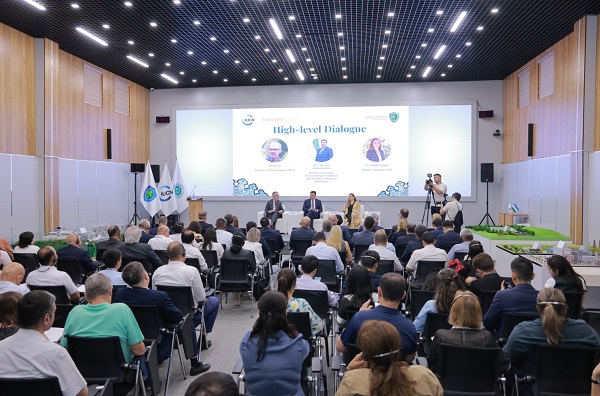In Tashkent, a ceremony marked the opening of the first International Union for Conservation of Nature (IUCN) Office for Central Asia. The office is housed within the Central Asian University for Environmental and Climate Change Studies (Green University).
The high-level event was attended by representatives of Central Asian governments, international organizations, the scientific community, and civil society. The new office will serve all five countries in the region—Kazakhstan, Kyrgyzstan, Tajikistan, Turkmenistan, and Uzbekistan—supporting their priorities in nature conservation, biodiversity, and climate change resilience.
According to Uzbekistan’s Minister of Ecology, Environmental Protection, and Climate Change, Aziz Abdukhakimov, the placement of the IUCN office at Green University—the region’s first university specializing in ecology and climate change—is not coincidental but a strategic decision. It creates opportunities for students, scientists, researchers, and the IUCN team to collaborate and engage in regional activities.
IUCN Director General Dr. Grethel Aguilar emphasized: “This office marks more than just a physical presence; it reflects our commitment to work side by side to conserve biodiversity, restore ecosystems, and strengthen climate resilience. From supporting protected area management and advancing regional dialogue to aligning policy frameworks and delivering on-the-ground conservation programmes, we are here to work hand-in-hand with the governments and people of Central Asia to achieve lasting impact for humanity and nature.”
IUCN Activities in Central Asia
In Central Asia, IUCN actively implements initiatives focused on environmental governance, support for protected areas, the adoption of nature-based solutions, and the development of integrated strategies for biodiversity conservation and climate change mitigation.
A key current project is the “One Health in Nature Conservation” initiative, which integrates ecosystem and human health into landscape planning and management.
Additionally, the Blue Peace Central Asia 2.0 project promotes transboundary water cooperation and hydro-diplomacy among the five regional countries.
In Uzbekistan, the FOLUR project focuses on restoring valuable natural habitats and supporting sustainable land use. In Kazakhstan, the Dryland Sustainable Landscapes Impact Programme (DSL-IP) enhances pasture management and drives ecosystem restoration.
These initiatives reflect IUCN’s cross-sectoral, science-based approach to nature conservation, grounded in the integration of policy, scientific data, and partnerships.
The implementation of these priorities will be led by the Central Asia Team under the guidance of Dmitry Gorshkov, recently appointed as the regional program coordinator. The regional office will serve as a coordination and knowledge hub. The office will link national and regional stakeholders with global tools and standards, including the IUCN Red List of Threatened Species™, the IUCN Green List of Protected and Conserved Areas, and the IUCN Global Standard for Nature-based Solutions™.
The opening of the IUCN office in Central Asia strengthens its role as a long-term partner in environmental protection and sustainable development. The organization will continue to support the region’s countries in achieving the goals of the Kunming-Montreal Global Biodiversity Framework and contributing to international efforts to prevent biodiversity loss. ///nCa, 4 June 2025


